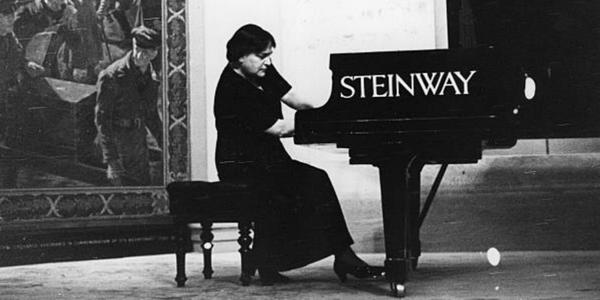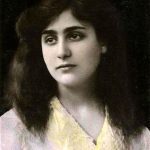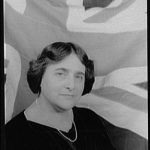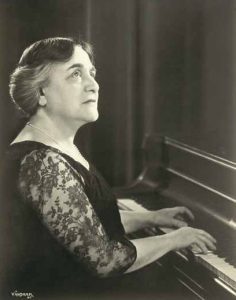
THIS WEEK IN PIANO HISTORY, we remember Dame Myra Hess, a British pianist who died on November 25, 1965. Hess rose to fame due to her lunchtime concerts in London during World War II and later became Dame of the British Empire (DBE) in 1941 in recognition of her outstanding musical achievements.
Hess was the youngest of four children and began studying piano at the age of five. She was a remarkable young talent and was admitted to both the Guildhall School of Music and the Royal Academy of Music where she studied with pianist Tobias Matthay. Matthay, a noted British pianist and composer, helped prepare Hess to launch her career as a soloist.
After studies with Matthay, Hess gave many successful performances as a young pianist, performing with conductors such as Willem Mengelberg and Thomas Beecham. After firmly establishing herself as a noted soloist in Europe, she toured constantly throughout Europe performing almost one hundred concerts a year.1 She became similarly popular in the United States after her debut, which occurred in 1922, and in numerous concerts including more than a dozen at Carnegie Hall.
Known primarily for her performances of Classical period repertoire, Hess was a strong proponent of the works of Mozart, Beethoven, and Brahms. Hess did not like to make recordings and struggled to listen to herself play stating, “when I listen to myself play, I feel I am going to my own funeral.”2 That said, there are a number of excellent performances and a few videos that survive of Hess’s live performances. Check out this recording of Myra Hess performing the first movement of Beethoven’s “Appassionata” Sonata.
One of Hess’s greatest achievements was her series of concerts that occurred during World War II. Performing in London’s National Gallery, Hess gave well over a hundred concerts while concert activity in London was halted due to the war. Her concerts were well attended and were inexpensive, allowing a large amount of people to afford to see her perform. The concerts were not just solo performances—Hess frequently performed chamber music in this setting, inviting other important British musicians to share the stage with her.



Myra Hess’s career further blossomed after the end of World War II. She gave notable performances of works of Mozart, Brahms, Beethoven, and more before her death in 1965. As we look back on Myra Hess’s life and career, it is her invaluable engagement in civic life as an artist during the twentieth century’s most chaotic and unsettled period and her spectacular recordings that make her a defining musical figure of the twentieth century. Learn more about Myra Hess and her London concerts during World War II in this Piano Magazine article by Elizabeth Lemme.
Sources
- Bryce Morrison, “Hess, Dame Myra,” Grove Music Online, 2001, accessed 15 Nov. 2022, www-oxfordmusiconline-com.uc.idm.oclc.org/grovemusic/view/10.1093/gmo/9781561592630.001.0001/omo-9781561592630-e-0000012935.
- Bryce Morrison, “Hess, Dame Myra,” Grove Music Online, 2001, accessed 15 Nov. 2022, www-oxfordmusiconline-com.uc.idm.oclc.org/grovemusic/view/10.1093/gmo/9781561592630.001.0001/omo-9781561592630-e-0000012935.
britannica.com/biography/Myra-Hess
nationalgallery.org.uk/about-us/history/the-myra-hess-concerts/myra-remembered